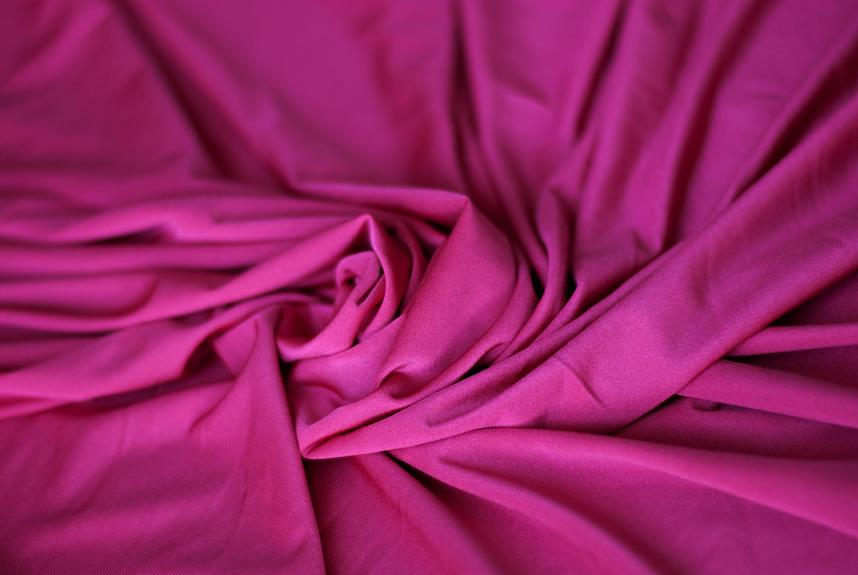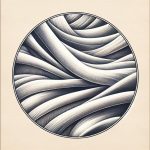When you're deciding between Batiste and Poplin for your next sewing project, you'll want to consider how each fabric's unique qualities can enhance your designs. Batiste offers a soft, lightweight feel that's ideal for delicate garments, while Poplin's crisper texture provides a more structured look. Both fabrics have their advantages, but understanding their differences can significantly impact your final choice. So, how do you determine which fabric aligns best with your vision? Let's explore the specifics that can help you make an informed decision.
Table of Contents
Overview of Batiste
Batiste is a lightweight, breathable fabric that's often chosen for its soft texture and versatility in a variety of garments. You'll find it commonly used in items like blouses, dresses, and bedding, making it a popular choice for both casual and formal wear. The fine, sheer quality of batiste creates a delicate appearance, which is why it's perfect for layering.
When you work with batiste, you'll appreciate how easy it's to sew. Its smooth surface allows for clean, neat seams, and it doesn't fray easily, which can save you time during your projects. Plus, the drape of the fabric enhances the overall look of your finished garments, giving them an elegant flow.
Batiste is typically made from cotton, but you may also encounter blends with polyester or linen. This variety ensures that you can find batiste with the right properties for your needs, whether you want something that's extra soft or more durable.
Overview of Poplin
Poplin is known for its unique fabric characteristics, making it a popular choice in various applications.
You'll find it commonly used in clothing, especially for shirts and dresses, due to its durability and smooth finish.
Let's explore what sets poplin apart in terms of its properties and common uses.
Fabric Characteristics and Properties
When you explore fabric options, poplin stands out for its smooth texture and lightweight feel, making it a versatile choice for various garments. This fabric is typically made from cotton, though you'll also find blends with polyester or silk, enhancing its durability and versatility. Poplin's tight weave gives it a crisp finish, offering a polished look that's perfect for both formal and casual wear.
One of poplin's notable characteristics is its breathability. It allows air to circulate, keeping you comfortable in warm weather. Additionally, it's easy to care for—most poplin fabrics are machine washable and resist wrinkling, which is a significant bonus for your busy lifestyle.
Another advantage of poplin is the variety of colors and prints available. Whether you're looking for vibrant hues or subtle patterns, poplin provides plenty of options to match your style. Its soft drape also allows for easy movement, making it suitable for various clothing types.
Common Uses and Applications
You'll find poplin widely used in various clothing items, thanks to its smooth texture and breathable qualities. This versatile fabric is ideal for both casual and formal wear, making it a favorite among designers and consumers alike. Poplin's durability ensures that your garments will withstand regular use while maintaining their crisp appearance.
Here's a quick look at some common uses and applications of poplin:
| Clothing Item | Description | Features |
|---|---|---|
| Dress Shirts | Lightweight and breathable, perfect for warm weather. | Easy to iron, holds shape well. |
| Dresses | Flows beautifully, suitable for both casual and formal occasions. | Comfortable and stylish. |
| Pants | Offers a polished look while ensuring comfort. | Versatile and easy to pair. |
Whether you're dressing up for an event or going for a laid-back look, poplin fabric has got you covered. Its versatility and ease of care make it a go-to choice for many clothing items, ensuring you'll always look your best.
Key Differences in Texture
Comparing the textures of batiste and poplin reveals distinct differences that affect their comfort and drape.
Batiste is known for its lightweight, airy feel, making it a popular choice for garments that require a delicate touch. You'll notice its soft, smooth texture, which drapes beautifully and tends to conform to the body's shape without adding bulk. This gives batiste a graceful flow, perfect for flowing blouses or layered skirts.
On the other hand, poplin has a slightly crisper texture, characterized by its heavier weight and tighter weave. You might find that poplin feels more structured and firm, which allows it to hold its shape well. This quality makes poplin ideal for tailored garments, like shirts and dresses, where you want a more polished appearance. While batiste feels soft against the skin, poplin can feel a bit more substantial, giving you a different type of comfort.
Ultimately, your choice between batiste and poplin will hinge on the look and feel you desire in your fabric. Both have their unique textures, influencing how they'll perform in your next sewing project.
Common Uses for Batiste
When you think about batiste, consider its lightweight nature and versatility.
It's perfect for garments like blouses and summer dresses, where breathability is key.
You'll appreciate how it drapes beautifully, making any outfit feel effortlessly stylish.
Lightweight Fabric Characteristics
Batiste is frequently chosen for its lightweight characteristics, making it ideal for garments like blouses, dresses, and delicate undergarments. Its fine, soft texture feels gentle against your skin, providing comfort, especially in warmer weather. You'll appreciate how breathable batiste is, allowing air to circulate freely, which helps keep you cool and dry throughout the day.
Another advantage of batiste is its excellent drape. When you sew with it, you'll notice how beautifully it falls, creating an elegant silhouette. This quality enhances the overall aesthetic of your projects, giving them a refined look. Plus, batiste's smooth surface makes it a dream to work with, as it easily captures prints and colors, resulting in vibrant, eye-catching designs.
You can also rely on batiste for layering. Its lightweight nature allows you to combine it with other fabrics without adding bulk, perfect for creating versatile outfits. Whether you're making summer attire or intricate details on a garment, batiste's characteristics make it a go-to choice for those who value both style and comfort.
Embrace batiste in your sewing endeavors, and you won't be disappointed!
Ideal for Garments
You'll find that batiste is perfect for a variety of garments, especially those that require a lightweight, airy feel. This fabric's delicate nature makes it an excellent choice for specific clothing items, allowing you to create effortless style without added bulk.
Here are some common uses for batiste:
- Shirts and Blouses: You can craft beautifully flowing tops that are comfortable and breathable, ideal for warm weather.
- Lingerie: The softness of batiste makes it perfect for intimate wear, providing a gentle touch against your skin.
- Children's Clothing: Batiste is great for kids' outfits, as it's lightweight and easy to care for, ensuring comfort during play.
- Dresses: Whether you're designing a summer dress or a layered look, batiste adds elegance without weighing down the silhouette.
When you choose batiste for your projects, you're opting for a fabric that combines versatility with comfort. Its ability to drape beautifully enhances your designs, making them suitable for casual and formal occasions alike.
Embrace batiste for your next sewing adventure!
Common Uses for Poplin
Poplin is commonly used for a variety of clothing items, including shirts, dresses, and lightweight jackets, thanks to its smooth texture and durability.
You'll find poplin shirts are popular in both casual and formal settings, as they offer a crisp appearance that's easy to dress up or down. For women, poplin dresses provide a flattering silhouette, perfect for warm weather or layering in cooler months.
In addition to everyday wear, poplin is often chosen for uniforms, as it withstands frequent washing while maintaining its shape and color. If you're looking to create a polished look for work or special occasions, poplin is an excellent choice.
Poplin's lightweight nature makes it ideal for summer wear, allowing for breathability and comfort. You might also encounter poplin in children's clothing, where its softness and resilience are particularly beneficial.
Moreover, poplin's versatility extends to home textiles. You'll see it in bed linens or curtains, where its smooth finish adds an elegant touch to any room.
Care and Maintenance Tips
Caring for poplin requires a few simple steps to keep it looking fresh and vibrant. By following these tips, you'll prolong the life of your fabric and maintain its quality.
- Washing: Always machine wash poplin in cold water with a gentle cycle. This helps prevent fading and shrinking. Avoid using bleach, as it can damage the fibers.
- Drying: It's best to line dry poplin when possible. If you prefer using a dryer, set it to low heat. Remove the fabric promptly to minimize wrinkles.
- Ironing: If you need to iron your poplin, use a medium heat setting. Iron it while it's slightly damp for the best results. This ensures a crisp, neat finish without damaging the fabric.
- Storage: Store your poplin items in a cool, dry place. Avoid exposing them to direct sunlight for extended periods, as this can lead to discoloration.
Choosing the Right Fabric
When selecting between batiste and poplin, consider the specific needs of your project to ensure you choose the most suitable fabric. Batiste is lightweight and sheer, making it perfect for delicate garments like blouses and baby clothes. If you're after a soft, flowing look, it's the way to go. On the other hand, poplin is more durable and heavier, ideal for structured clothing such as shirts and dresses.
To help you decide, here's a quick comparison:
| Feature | Batiste | Poplin |
|---|---|---|
| Weight | Light and airy | Medium weight |
| Texture | Soft and smooth | Crisp and slightly textured |
| Best For | Delicate garments | Structured clothing |
| Care | Gentle wash recommended | Machine washable |
| Breathability | Highly breathable | Moderately breathable |
Frequently Asked Questions
What Are the Origins of Batiste and Poplin Fabrics?
Batiste originated in France, known for its lightweight, fine texture, while poplin traces back to Italy, originally made from silk and wool. Both fabrics evolved over time, adapting to various uses in fashion and textiles.
Can Batiste and Poplin Be Blended With Other Materials?
Yes, you can blend batiste and poplin with other materials. Combining them with fibers like cotton, polyester, or silk creates unique textures and enhances durability, making them suitable for various clothing and home décor applications.
How Do Climate Conditions Affect These Fabrics' Performance?
Climate conditions significantly impact fabric performance. In humid weather, lightweight materials like batiste may cling, while poplin's durability can withstand varying temperatures. You'll notice these effects in breathability and overall comfort during different seasons.
Are There Specific Brands Known for Quality Batiste or Poplin?
When searching for quality batiste or poplin, you can't go wrong with brands like Liberty, Robert Kaufman, or Fabric.com. They're known for their excellent craftsmanship and vibrant patterns, ensuring you'll find something perfect for your project.
What Is the Environmental Impact of Producing Batiste and Poplin?
When you consider the environmental impact of producing batiste and poplin, you'll find that both fabrics can vary significantly. Sustainable practices, water usage, and chemical treatments play crucial roles in their overall ecological footprint.
- How Does Ring Spun Cotton Affect Garment Fit and Shape Retention? - August 13, 2024
- What Are the Challenges in Producing Ring Spun Cotton? - August 13, 2024
- Is Ring Spun Cotton Suitable for Plus-Size Clothing? - August 13, 2024







